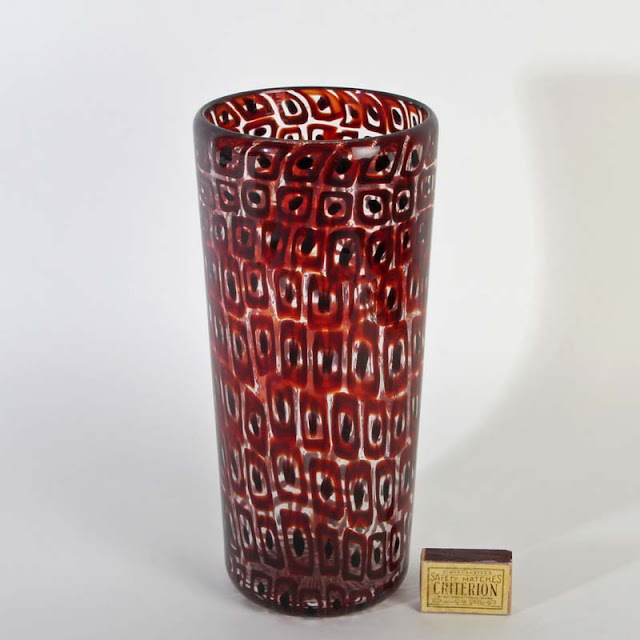Many years ago, soon after getting my first job as a teacher, I bought a large Lalique vase, from an antique shop, in Plymouth. The vase was large — about 35 cm high — and made of light blue frosted glass, decorated with a deep press-moulded pattern of leaves, its surface etched and coated with blue powder.
I borrowed money from my uncle to pay for it, but never regretted spending the equivalent of more than half a month salary on a single, extra-ordinary object. This revived an embryonic interest in glass inspired by visits to the flea market in Aix-enProvence, whilst a student, and inspired a life-long practice to collect objects of quality and expect to pay for it, within my means.
The pleasure this Lalique vase gave me over the years confirmed that spending as much as one can afford on one good piece is preferable to buying several cheaper, ordinary objects, that eventually — through accumulation — defuse each other, and add up to visual clutter.
A few years later, I bought my first Venini vase, smaller, unsigned (and, thus, affordable), but unmistakably Venini. This vase, of cased blue 'pulegoso' glass over a layer of milky white ('lattimo') glass had specks of gold, sprinkled on the surface when the glass was still hot, that gave it a rich and subtle quality — reminiscent of an early night sky — qualities that could only be fully appreciated at close range.
From the pictures I saw in books, it was probably made at Venini around 1930.
At the same shop, on that day, I encouraged my uncle to buy a signed Venini vase (see picture below).
This encounter with two Venini vases; one (below) designed by Tommaso Buzzi in 1932 or 1933 (date Buzzi worked for Venini) — marked my introduction to Murano glass:
The experience of four burglaries in the space of two years, in my Liverpool home — when the burglers removed the two vases from the speakers of the stereo system on which they stood, put them on the floor, before walking off with my stereo system — induced me (albeit reluctantly) to part with the vases.
This fear short-circuited what could have been the start of a glass collection.
I borrowed money from my uncle to pay for it, but never regretted spending the equivalent of more than half a month salary on a single, extra-ordinary object. This revived an embryonic interest in glass inspired by visits to the flea market in Aix-enProvence, whilst a student, and inspired a life-long practice to collect objects of quality and expect to pay for it, within my means.
The pleasure this Lalique vase gave me over the years confirmed that spending as much as one can afford on one good piece is preferable to buying several cheaper, ordinary objects, that eventually — through accumulation — defuse each other, and add up to visual clutter.
A few years later, I bought my first Venini vase, smaller, unsigned (and, thus, affordable), but unmistakably Venini. This vase, of cased blue 'pulegoso' glass over a layer of milky white ('lattimo') glass had specks of gold, sprinkled on the surface when the glass was still hot, that gave it a rich and subtle quality — reminiscent of an early night sky — qualities that could only be fully appreciated at close range.
From the pictures I saw in books, it was probably made at Venini around 1930.
At the same shop, on that day, I encouraged my uncle to buy a signed Venini vase (see picture below).
This encounter with two Venini vases; one (below) designed by Tommaso Buzzi in 1932 or 1933 (date Buzzi worked for Venini) — marked my introduction to Murano glass:
 |
The experience of four burglaries in the space of two years, in my Liverpool home — when the burglers removed the two vases from the speakers of the stereo system on which they stood, put them on the floor, before walking off with my stereo system — induced me (albeit reluctantly) to part with the vases.
This fear short-circuited what could have been the start of a glass collection.
Decades later, in 2015, the signed Venini was gifted to me, in memory of my defunct uncle Peter.
By then I had acquired two large Venini vases made in 1984 and 1995 respectively.
By then I had acquired two large Venini vases made in 1984 and 1995 respectively.













































